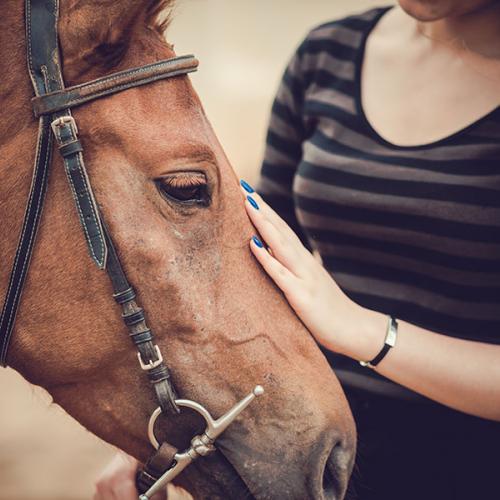There are lots of trainers – good trainers and bad trainers. This is a conversation that comes up a lot with equestrians of all disciplines and all skill levels. When is it time to move on from your current trainer?

ADR. A highly technical term describing any variety of maladies affecting equines from attitude problems to performance issues to poor body condition. The “Ain’t Doin’ Right” horse represents a significant problem for many horse owners and their veterinary support network.
In evaluating the ADR horse, many owners jump to the conclusion that intensive testing and diagnostics are required to ascertain the source of their horse’s poor body condition. In many instances, more common management issues should be evaluated and corrected before looking for less obvious health concerns. Remember that “the common things happen commonly.”
Nutrition
Malnutrition, Agroceriosis, High Trough Disease. The nutritional status (quality and quantity) should be evaluated when assessing the horse in poor body condition. Adjustments to amounts or quality of concentrate are potential solutions. Critically assess the quality of the forage available. Supplemental hay may be needed when pasture is limited. If multiple horses are fed in the same area at the same time, assure that the poor doer is not being bullied and prevented from receiving his fair share. One alarm bell that such a situation might exist can be evidenced by excess body condition in one or more individuals within the same group. Consider feeding the less aggressive, bullied individual in a confined area to assure its adequate nutritional intake.
Parasites
Year-round parasite control is critical to assure adequate absorption of nutrients. Recall that there are individual variations in the ability to tolerate parasite loads. Rotational deworming programs with multiple products having different active ingredients with differing mechanisms of action are less likely to promote resistance.
Dental Disease
Proper parasite control and a high plane of nutrition provided are little help if the horse cannot assimilate such nutrients for growth and body condition maintenance.
Recall that as a horse ages, the teeth continually erupt from the upper and lower jaws similar to a tube of toothpaste. They grind against each other to promote a level dental plane. The outside edge of the upper teeth and inside edge of the lower teeth are provided no such surface to be ground smooth. These sharp edges can irritate the cheek and tongue of the horse during chewing or when bits are placed in the mouth. With advancing age, senior horses may have teeth missing and an uneven dental plane, affecting chewing and break down of feedstuffs.
Evidence of dental issues can include a head tilt when eating, excessive slobbering, exaggerated tongue movements, and a lack of response to bits during riding. Impressive and effective dental procedure to correct such dental issues can now be performed on the farm.
Assess these major areas of concern, make the necessary corrections through consulting your veterinary professional, and you may find that “the common things happen commonly.”
There are lots of trainers – good trainers and bad trainers. This is a conversation that comes up a lot with equestrians of all disciplines and all skill levels. When is it time to move on from your current trainer?
While you are working on New Year’s resolutions for yourself, consider making a few for your horse as well. Here are a few suggestions...
Maintaining a healthy weight is essential for horses as they age. Here are a few tips to help keep your horse fit and trim.
Would you know it if your horse was in pain? Even if you knew your horse was in pain, would you know what type of pain he or she was suffering from?